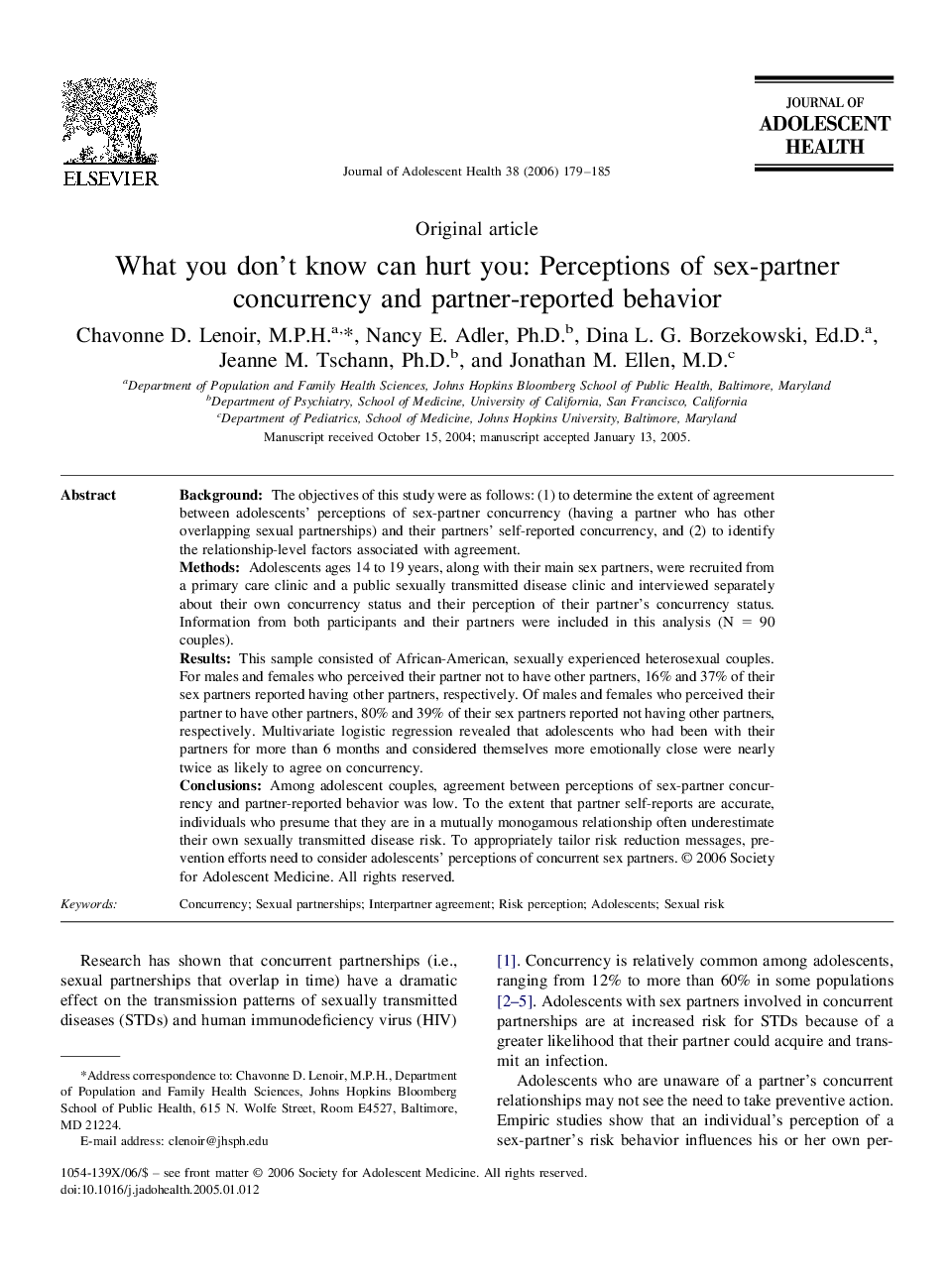| کد مقاله | کد نشریه | سال انتشار | مقاله انگلیسی | نسخه تمام متن |
|---|---|---|---|---|
| 1081293 | 950583 | 2006 | 7 صفحه PDF | دانلود رایگان |

BackgroundThe objectives of this study were as follows: (1) to determine the extent of agreement between adolescents’ perceptions of sex-partner concurrency (having a partner who has other overlapping sexual partnerships) and their partners’ self-reported concurrency, and (2) to identify the relationship-level factors associated with agreement.MethodsAdolescents ages 14 to 19 years, along with their main sex partners, were recruited from a primary care clinic and a public sexually transmitted disease clinic and interviewed separately about their own concurrency status and their perception of their partner’s concurrency status. Information from both participants and their partners were included in this analysis (N = 90 couples).ResultsThis sample consisted of African-American, sexually experienced heterosexual couples. For males and females who perceived their partner not to have other partners, 16% and 37% of their sex partners reported having other partners, respectively. Of males and females who perceived their partner to have other partners, 80% and 39% of their sex partners reported not having other partners, respectively. Multivariate logistic regression revealed that adolescents who had been with their partners for more than 6 months and considered themselves more emotionally close were nearly twice as likely to agree on concurrency.ConclusionsAmong adolescent couples, agreement between perceptions of sex-partner concurrency and partner-reported behavior was low. To the extent that partner self-reports are accurate, individuals who presume that they are in a mutually monogamous relationship often underestimate their own sexually transmitted disease risk. To appropriately tailor risk reduction messages, prevention efforts need to consider adolescents’ perceptions of concurrent sex partners.
Journal: Journal of Adolescent Health - Volume 38, Issue 3, March 2006, Pages 179–185